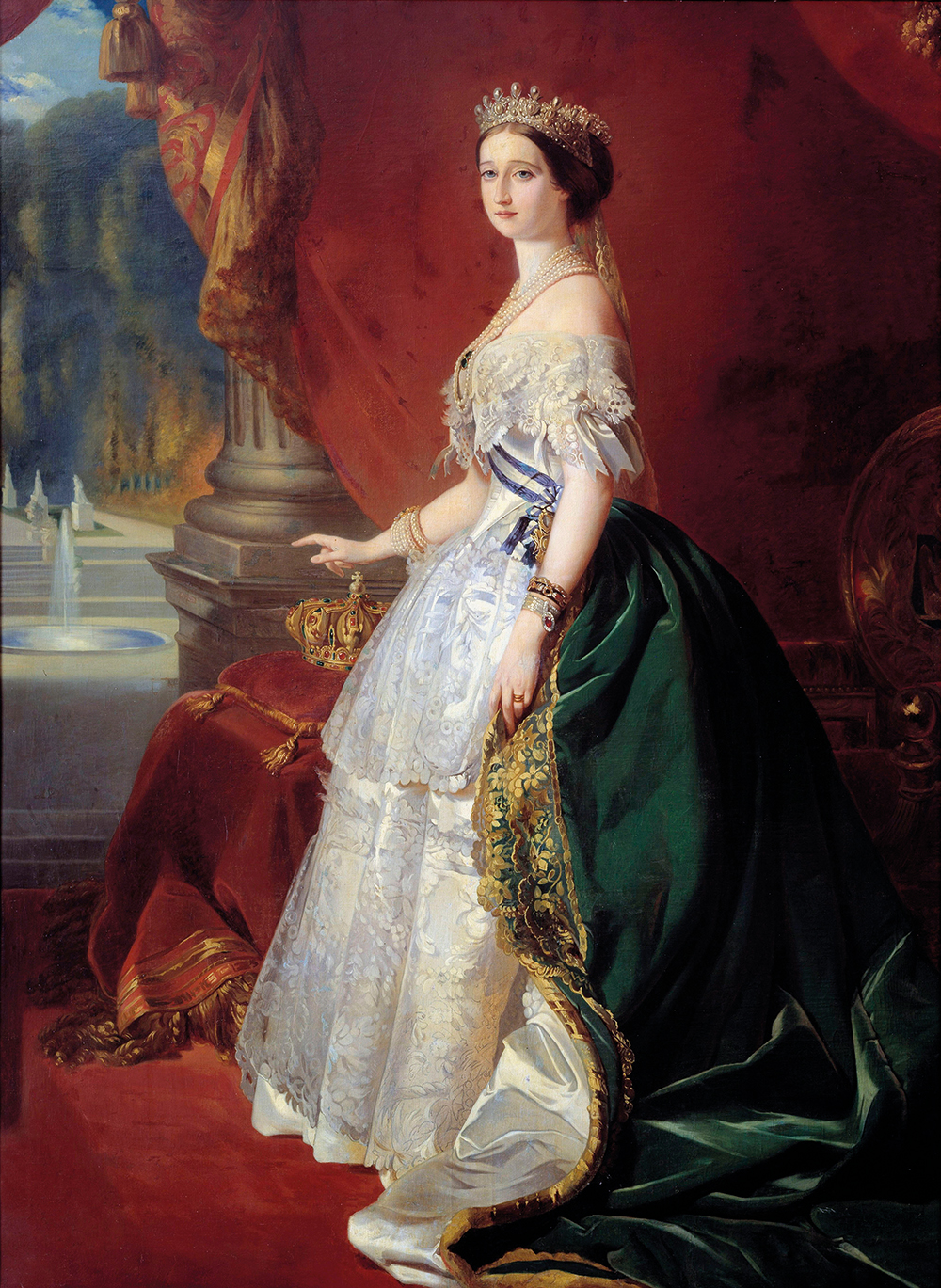
This hefty book is more about context – the turbulent years of mid-19th-century Europe – than it is about its two protagonists. Details of the many popular uprisings of the time, plus the jockeying for position of the main players and the battles and intrigues involved, are so packed into its pages that teasing out the stories of the two empresses is not always easy.
The early married life of Empress Elisabeth of Austria, known as Sisi, sounds appalling. Her older sister had been groomed to marry the young Emperor Franz Joseph, but the moment he saw Sisi, then only 15, she was the one he wanted. It was impossible to turn him down. Much of the future of Bavaria (her parents’ kingdom), let alone that of her own family, depended on his goodwill.
To the child it seemed like one of the romantic fairy tales of which she was so fond; but the reality could not have been more different. After marrying in 1854, aged 16, she was plunged into what sounds like a prison – and solitary confinement at that. Her formidable mother-in-law, Archduchess Sophia, controlled everything, from the empire to her son – who from early childhood had obeyed her entirely and continued to do so. Far from her family, Sisi was given stiff, disapproving, elderly ladies-in-waiting; she was forbidden the outdoor exercise that was vital to her wellbeing, ordered to learn French and Spanish, and hedged in by the rigid protocol of the Viennese court. Even her children were taken away from her by the archduchess, and she spent most of the time in tears.
When it all grew too much, she installed a gymnasium in her room, exercising for hours on end and often refusing to eat, as though that were the only way to allay her sorrows. Her husband, too, was beset by problems, which, together with his weeping wife, may have encouraged him to take a mistress. This, for Sisi, whose only lifeline had been his intense love for her, was the ultimate betrayal.
So she fled, beginning a pattern of holidays in which she rode, swam or simply wandered by herself away from Vienna, court etiquette and her mother-in-law. Her health began to improve, and she was finally able, after years of marriage, to stand up to Sophia and lead more or less the life she wanted – dancing with whom she pleased, riding, walking, and above all caring for her children.
A year before Sisi’s wedding, the beautiful Eugénie de Montijo, aged 26, married the dashing Emperor Napoleon III (the nephew of Napoleon Bonaparte), then in his early forties. Three years earlier, he had tried, crudely and unsuccessfully, to seduce her, upon which her mother removed her from Paris and dragged her round the capitals of Europe, seeking a suitable match. They returned to Paris just as Louis-Napoleon, having become president by popular demand, declared himself emperor.
To celebrate his triumph, he threw a fabulous hunting party at Fontainebleau, where Eugénie, in skin-tight riding clothes, high-heeled patent leather boots and pearl-handled riding crop, drew all eyes – including those of Louis-Napoleon. He renewed his attempts at seduction; but for Eugénie, who by now admired him greatly as a man of action, it was marriage or nothing. Against the advice of those who felt he should have made a grander and more diplomatic match, the besotted emperor announced their engagement, and they were married a week later.
Sisi was hedged in by the rigid protocol of court life, and even her children were taken away from her
Within a few years, and after the birth of an heir, Napoleon III’s eye was roving again, and the marriage was virtually over. But Eugénie knew her duty and performed faithfully the role of empress, accompanying her husband everywhere on state occasions. While he remodelled Paris, with Baron Haussman, as the city we know today, she turned her court into the most glittering in Europe. I could have done with a bit more trivia from Nancy Goldstone here – on the wonderful Worth dresses, to be worn only once, the jewels and the fun. But no, what we get are the problems. And very real they were for both Franz Joseph and Napoleon III. There was the question of whether to side with Cavour and Garibaldi as Italy strove for independence; of whether to institute reforms if the people were discontented or to stamp down hard; and of how to react to the sinister growing threat of a Germany being welded together by Bismarck.
The two empresses had little in common, apart from the fact that each stood up for herself in an era when women tended not to (though in Sisi’s case this took some time). And they both had a reputation for beauty and red hair – Sisi’s luxuriant and auburn; Eugénie’s, as her friend Prosper Merimée wrote, ‘the hair that Titian loved’. In their prime they only met once, in Salzburg, in 1867. Years later, both shattered by the deaths of their only sons, with their empires fragmented or gone, they met again in Menton and exchanged confidences. Four years later, Sisi was randomly assassinated by an Italian anarchist. Eugénie lived until 1920.








Comments